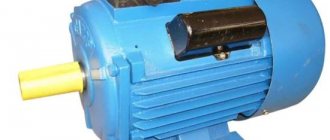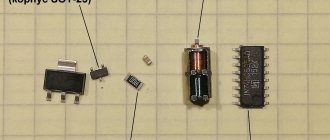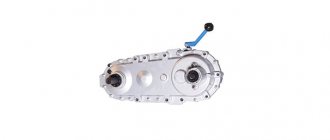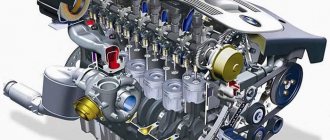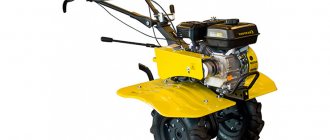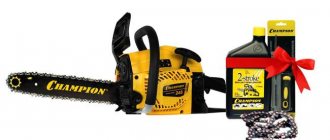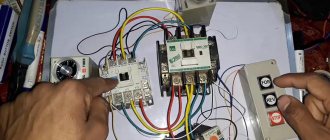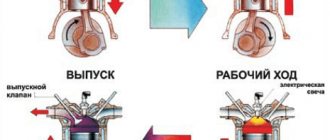One of the main differences between a modern CNC machine and “classical” manually controlled models is the lack of kinematic connection between the mechanisms responsible for the movement of working parts and rotation of the spindle. The separate drive allows you to abandon the use of multi-stage gearboxes, mechanical dividing heads, and entrust complex calculations to a computer. But in order for the movements to be accurate, and for the machine to always understand at what point the cutting tool is located at the current moment in time, the drive must have very specific parameters. In the mechanisms of a CNC machine, stepper motors cope best with these tasks: compact, “obedient” to control and relatively inexpensive.
In this article we will talk about the operation of these devices, try to find their shortcomings and select alternative options.
What are the determining criteria for selection?
We must remember that, compared to conventional motors, stepper motors require more complex control circuits. But there are not so many criteria.
- Inductance parameter.
The first step is to determine the square root of the winding inductance. We then multiply the result by 32. The value obtained as a total then needs to be compared with the voltage of the source from which the power goes to the driver.
These numbers should not differ too much from each other. The motor will heat up and make too much noise if the supply voltage is 30% or more greater than the obtained value. If it is less, then as the speed increases, the torque decreases. The higher the inductance, the easier it is to maintain high torque. But for this you need to select a driver that has a high supply voltage. Only in this case the stepper motor works normally.
- A graph of how torque and speed depend on each other.
This will allow you to understand how well the engine, in principle, meets the requirements and technical specifications.
- Geometric plan parameters.
It is recommended to pay special attention to the shaft diameter, flange and motor length.
In addition, it is also recommended to carefully study the following indicators:
- Maximum static synchronizing torque.
- Moment of inertia of the rotors.
- The current inside the phase is at nominal.
- The total phase resistance is ohmic type.
Alternative options
The only competitor to a stepper motor in a CNC machine is a servomotor. Its installation requires the implementation of a more complex control circuit with feedback (encoder). It also has other disadvantages. The choice between a servo drive and a stepper motor for a CNC machine raises many questions among novice machine operators and debates on forums. To determine the optimal drive composition, the following factors must be taken into account:
- Price.
With strict budget restrictions, there is no wide choice in principle, and it is believed that a stepper motor is much cheaper than a servomotor. But this is true for small devices. The more power, the smaller the difference in price, and for some large models the cost of both types of motors is comparable. - Weight and dimensions characteristics of the machine.
The larger the machine, the more power is needed to move the working parts. The tendency to resonance phenomena is more pronounced in powerful stepper motors, which can lead to missed steps and reduced processing accuracy. For CNC milling machines, it is recommended to choose servo motors if the weight of the portal exceeds 50 kg. - Difficulty setting up.
Feedback drive circuits require precise adjustment and highly skilled operator. If you want the simplest solution, a stepper motor is the best choice for your CNC machine. - Possibility of overload and jamming.
It is believed that if the servomotor becomes jammed, it will definitely fail. This is not entirely true. If the machine is configured correctly, the driver will not send a signal to re-execute the movement, program execution will stop, and the rack will go into standby mode until the operator or adjuster intervenes. Stepper motors may skip several steps when overloaded. Due to the lack of feedback, the control system will not know about this and will continue to count down the steps further. Skipping several steps during a short-term jamming is a defective part at the output. Loss of steps is also possible due to external vibrations and impacts. - Movement speed.
In massive CNC machines with stepper motors, the gantry speed usually does not exceed 9 m/min. If the workpiece material and cutting tool allow you to assign a processing mode at higher speeds, then the motor will be a bottleneck that limits productivity. The same portal driven by a servomotor of a similar size can reach speeds of up to 60 m/min. - Working accelerations.
Overclocking the stepper motor will inevitably cause skipping steps. If you plan to work at high accelerations, it is better to choose a servomotor. - Load on the transmission at the moment of stopping.
In heavy CNC machines, stepper motors are often installed on the vertical movement mechanisms of the spindle. The rotor is braked by magnetic forces after stopping. The servo drive oscillates when stopped, which is very undesirable. The stepper motor behaves well in mechanisms for rotating the workpiece (4th axis), when it is required to hold it in a stationary position.
About types of engines
For a machine, the type of stepper motors used is a parameter no less important than the rest. Each model has its own characteristics.
- Bipolar ones are most often used in conjunction with CNC.
The main advantage is the ability to easily select a new driver if the old one fails. At low speeds, high resistivity is maintained.
- Three-phase.
They are characterized by high speed. Relevant if this parameter is given the most attention in the event of a choice.
- Unipolar.
These are several types of bipolar motors, which differ from each other and are selected depending on the winding connection.
Additional recommendations for selection
The maximum current of the required voltage going to the terminals is the main factor on the basis of which a choice should be made. The current supplied by the driver can be of the following types:
The desired parameters for the initial voltage are selected using special switches.
Stepper motors can have different wiring orders. It usually depends on how many wires the drive is equipped with. It is necessary to pay attention to the purpose of the device. There are many models on the market, and almost each has its own version of the connected circuit. Up to 4-6 wires are placed inside. Bipolar modules come standard with variants with four wires.
Every two windings come with two drives. You need to use a regular meter to avoid mistakes. Six-wire motors have maximum power. This means that each winding is accompanied by two wires and one center tap. Such devices allow two types of connections:
Measuring instruments are also used to separate wires. Unipolar devices assume that all six wires are used. In the case of bipolar ones, you can take only one central tap along with wires along one winding.
Regarding resonance at mid frequencies
Stepper motors are associated with the occurrence of strong resonance. Essentially, they work like a pendulum with a weight suspended from a spring. The role of the load is played by the rotor, and the field with magnetic energy is played by the spring. Natural vibrations have a frequency determined by two indicators:
- Rotor inertia.
- Current strength.
Resonance appears when the difference between the speed and phase of the torque reaches 180 degrees. This means that there is a correspondence between speed and changes within the magnetic field. The movement becomes fast when positioning on a new step. Torque drops because more energy is needed to overcome inertia.
How to choose a stepper motor for a CNC machine?
Independent selection of a stepper motor for a CNC drive machine is a complex job and requires precise calculations. It must overcome the frictional force in the ball screw or screw-nut transmission, the inertia of the portal and the working load, which depends on the properties of the workpiece and the cutting mode. You also need to take into account the geometric parameters of the connecting flange, shaft and housing. An important point is the analysis of the graph of the dependence of torque on rotation speed. This is where mistakes lead to skipping steps.
For those who decide to assemble the machine themselves, we recommend looking at the characteristics of the drives of ready-made models that are similar in size and assigned tasks.
About encoders and drivers, connections
Special drivers are needed to control the device. They connect to LTP ports on personal computers. The program generates signals, which are then received by the drivers. After which the engine receives certain commands. Supplying current to the windings allows you to organize the operation of the entire device. The software makes it easier to control:
- According to motor size.
- For speed.
- Along trajectories.
The driver is a block responsible for controlling the entire engine. The control signal is generated with the participation of a special controller. Which involves connecting four terminals of the stepper motor to the device at once. Energy, negative and positive, comes from the power supply, and it is connected to the motors for further operation.
From the PU controller, signals go to the driver. Next, control of the process is organized, during which the switches that make up the circuit with the supply voltage are switched. The latter goes from the power supply to the engine, passing through the keys.
How does a stepper motor work?
The most important design feature of a stepper motor is its pronounced magnetic poles. On the stator, their role is played by the winding cores. The rotor looks like a gear wheel: the protrusions on its surface are also poles (of permanent magnets). Thanks to this design, the stepper motor is capable of making discrete angular movements and stopping at a certain position. The machine assembly connected to it through a screw-nut transmission performs a given linear movement.
The control signal for a stepper motor is a sequence of pulses. Their number is a multiple of the number of steps the rotor makes. The machine control system knows how many pulses were sent to the motor and can calculate the current position of the actuator.
What else to consider?
A center tap is called a regular wire. They also use the notation “. Some stepper motor models are equipped with similar devices. Each winding comes with three wires when it comes to unipolar options. Two of them organize a connection with transistors. The center tap or middle one goes straight to the power source or voltage.
The two side wires can be completely ignored if transistors are not planned to be used.
Five- and six-wire models are similar in many ways. But inside, the central wires are led out into one common cable, along with the other components. The windings cannot be connected to each other if there are no breaks. It is best to connect the middle wire with other conductors. Then you won’t have to worry about the effectiveness and safety of the device. You just need to take the appropriate parts.
CNC woodworking. Which SD should I choose?
Post by Dushman » Mar 06, 2022, 10:24 am
Re: CNC woodworking. Which SD should I choose?
Post by MX_Master » 06 Mar 2022, 10:57
Re: CNC woodworking. Which SD should I choose?
Post by nevkon » Mar 06, 2022, 12:25 pm
Re: CNC woodworking. Which SD should I choose?
Post by Dushman » 06 Mar 2022, 12:28
Re: CNC woodworking. Which SD should I choose?
Post by MX_Master » 06 Mar 2022, 12:41
Re: CNC woodworking. Which SD should I choose?
Post by Dushman » 06 Mar 2022, 12:45
Another question: Should I connect it directly to the stud or through a gear (toothed belt)?
Re: CNC woodworking. Which SD should I choose?
Post by slavyan75 » 06 Mar 2022, 13:04
Re: CNC woodworking. Which SD should I choose?
Post by Dushman » 06 Mar 2022, 13:32
Re: CNC woodworking. Which SD should I choose?
Post by raddd » 06 Mar 2022, 13:36
Re: CNC woodworking. Which SD should I choose?
Post by Dushman » 06 Mar 2022, 13:47
Re: CNC woodworking. Which SD should I choose?
Post by loi_28 » 06 Mar 2022, 13:49
Re: CNC woodworking. Which SD should I choose?
Posted by xenon-alien » 06 Mar 2022, 13:56
Re: CNC woodworking. Which SD should I choose?
Post by Dushman » 06 Mar 2022, 13:57
Re: CNC woodworking. Which SD should I choose?
Post by loi_28 » 06 Mar 2022, 14:19
Re: CNC woodworking. Which SD should I choose?
Post by Dushman » 06 Mar 2022, 14:28
Re: CNC woodworking. Which SD should I choose?
Re: CNC woodworking. Which SD should I choose?
Re: CNC woodworking. Which SD should I choose?
Re: CNC woodworking. Which SD should I choose?
Post by Dushman » 06 Mar 2022, 20:01
Source
Which hybrid servo stepper drive should you choose?
Which hybrid servo stepper drive should you choose?
Post by parket_3d » 02 Nov 2022, 18:15
Re: Which hybrid servo stepper drive should I choose?
Post by lkbyysq » 02 Nov 2022, 21:28
Re: Which hybrid servo stepper drive should I choose?
Post by parket_3d » 02 Nov 2022, 21:39
Re: Which hybrid servo stepper drive should I choose?
Post by AVK74 » 03 Nov 2022, 10:24
Re: Which hybrid servo stepper drive should I choose?
Post by parket_3d » 03 Nov 2022, 10:46
Re: Which hybrid servo stepper drive should I choose?
Post by lkbyysq » 03 Nov 2022, 12:40
Re: Which hybrid servo stepper drive should I choose?
Post by AVK74 » 03 Nov 2022, 13:59
Re: Which hybrid servo stepper drive should I choose?
Post by parket_3d » 03 Nov 2022, 16:01
Re: Which hybrid servo stepper drive should I choose?
Post by AVK74 » 03 Nov 2022, 16:34
Re: Which hybrid servo stepper drive should I choose?
Post by parket_3d » 03 Nov 2022, 17:31
Re: Which hybrid servo stepper drive should I choose?
Post by lkbyysq » 03 Nov 2022, 18:07
I have five machines, four of them are on simple steppers. It happens that they saw for two days without a break. And nothing.
Steppers get in the way of a bad barre dancer's balls.
Re: Which hybrid servo stepper drive should I choose?
Post by AVK74 » 03 Nov 2022, 19:55
Re: Which hybrid servo stepper drive should I choose?
Post by parket_3d » 03 Nov 2022, 21:41
Re: Which hybrid servo stepper drive should I choose?
Post by rehden » 05 Nov 2022, 23:48
Re: Which hybrid servo stepper drive should I choose?
Post by AVK74 » 06 Nov 2022, 06:52
Source
Advantages and disadvantages
Stepper motors have an extensive list of advantages. The most important of them:
- Affordable price.
Such drives are used not only in industrial machines, but also in household appliances. For example, stepper motors removed from printers are often installed on low-power homemade machines. - Reliability.
Due to the absence of brushes and the use of bearings with an excessive working life, it is quite difficult to damage a stepper motor. Overloading causes skipping steps but does not damage the engine. - High speed of response to the control signal.
Starting, braking and reversing occur almost instantly due to the fact that the engine develops its maximum torque at speeds close to zero.
Such drives also have disadvantages:
- There is always voltage on the motor windings, that is, it constantly consumes energy.
- Torque is speed dependent and drops off significantly at high speeds.
- The resonance effect is a drop in torque at some rotational speeds. Moreover, the resonant frequency is not constant and depends on the load size.
- If steps are skipped, the CNC system will not be able to correctly determine the position of the actuator if the stepper drive is operating without feedback.

